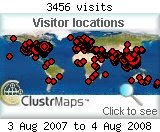Philippine Star
BIZLINKS By Rey Gamboa
Friday, June 27, 2008
There seems to be no end in sight to rising food prices, and with the rainy season upon us, expect price levels to go up, up and further up.
The World Bank noted during the recent world food security summit in Rome that food prices around the globe have risen by 83 percent in the last three years. Rice prices have hit a 19-year high last March.
World Bank president Robert Zoellick has predicted a sustained period of higher food costs, saying he expects prices to remain elevated through next year and stay above 2004 levels for at least the next seven years.
The food crisis, the World Bank stressed, will drive 100 million into poverty, 30 million of them in Africa alone.
We need not look far, right in our own backyards, poverty stares us in the face everyday. As early as six in the morning, the urban poor line up to buy cheap, subsidized rice at designated distribution centers of the National Food Authority. It’s amazing that the long line never tapers off even under the hot mid-day sun.
I would be curious to find out though if the long line will continue to be a daily thing once the government starts or pushes through, if it hasn’t yet, its plan to introduce a so-called better rice grade at the price of P35 a kilo.
Supposedly, the idea is to stabilize rice prices and ensure that this does not go beyond P40 a kilo during the lean months from July to September. I wonder though if the scheme isn’t a way for the government to go around the fact, that cash-strapped as it is, it can no longer afford buying expensive imported rice and selling this at a loss.
High commodity prices
Setting government rice at P35 a kilo brings more questions though. Is it importing different rice grades, and what are the price differentials? Will this policy be applied only during the lean months or will it be a permanent fixture?
Some skeptics are saying the government may have unwittingly set an unrealistic benchmark for rice prices, another misstep just like when it trumpeted to the world that the Philippines has a rice shortage – sending traders to speculate, and with prices of course, going through the roof.
Global rice prices, in part driven by soaring crude oil prices, have seen unprecedented spikes since the start of the year and have snowballed into other commodities as well.
High corn prices are also hurting livestock owners, who spend more than 60 percent of their production costs on corn to feed their cattle, hogs and chickens.
In the US which has drawn criticism for allocating a large volume of its corn production for ethanol use, some livestock owners are now faced with slaughtering parts of their herds or flocks to cope with rising feed costs, a move that will mean higher beef, chicken and pork costs later this year.
The same is true in the Philippines whose corn production is at best, erratic, often still relying on imports to fill shortages.
A leader of a local chicken growers group said many of the small producers want to increase production but are constrained because of higher production costs. They are also hesitating because they are not confident that they will be supported by demand. With prices escalating across the board and for all basic essentials, consumers’ purchasing power is fast eroding.
The supply of pork in Luzon is wanting, but there is aplenty in the Visayas and Mindano regions. The problem is that they can’t transport them to Manila because transport costs are unaffordable.
However did we get here? The World Bank said food prices have increased in response to many factors: higher energy and fertilizer prices; increased demand for biofuels, especially in the US and the European Union; and droughts in Australia and other countries.
World grain stocks are at record lows, and next year’s prices depend on the success of the next harvest in the northern hemisphere.
Zoellick made a good point when he stressed that much of what threatens to bring the world to its knees is not because of natural catastrophes, but are mostly man’s own doing. So, if the state we are in is man-made, then it is only us that could fix it or set things straight.
Solutions
His push for a “New Deal” on global food policy calls for a 10-point plan for boosting developing country agricultural products and productivity so developing countries could benefit from the growing demand for food.
As part of this longer-term strategy, agricultural research could triple yields and new risk management tools would be deployed to protect poor farmers. Easing bio-fuel subsidies, mandates and tariffs, and closing the Doha trade round are part of these longer-term measures.
The World Bank has even offered assistance for agriculture and food-related activities from $4 billion to $6 billion over the coming year.
The global food crisis, while clearly daunting, can also be an opportunity for policymakers in the country for instance to once and for all come up with innovative and creative long-term solutions to help the poorest of our lot cope with high food prices.
Dole-outs and the subsidies for now should be treated as just stop-gap measures, the real cure will need to come from sensible policies.
There are no quick fixes to high food prices. But probably, the one positive thing about this crisis is that it has somehow become an equalizer for both developed and developing countries.
The rich countries are seriously rethinking the wisdom of their atrocious subsidies to their agriculture sector that for decades have distorted trade. If our negotiators in the WTO are thinking on their feet, this can be a window to boost our chances of aggressively pushing for our rich counterparts to open their door to more agricultural trade.
It can still be a win-win situation.
Bagong Simula sa Bayan ni Juan
Breaking News
For other news and information, scroll the links found on the sidebar. Links to other relevant sites and media blogs are located on the lower right portion. - RAFS76
Friday, June 27, 2008
Living with high food prices
Posted by PhilMADE at 2:44 PM
Subscribe to:
Post Comments (Atom)













0 comments:
Post a Comment